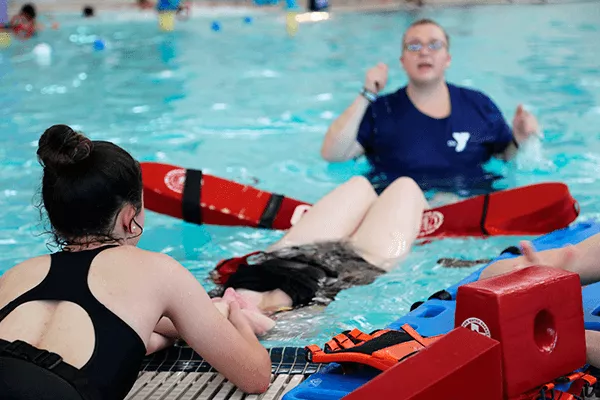
Lifeguarding is a profession that demands a blend of physical prowess, quick decision-making, and comprehensive knowledge of safety protocols. At American Lifeguard USA, we understand the critical role lifeguards play in ensuring public safety around water bodies. Our lifeguard training programs are meticulously designed to equip candidates with the skills and confidence needed to perform their duties effectively.
Here, we outline the five essential skills taught in our lifeguard class, each vital to the role of a proficient and reliable lifeguard.
1. Water Rescue Techniques
Understanding Water Dynamics and Safety
One of the most fundamental aspects of lifeguard training is mastering various water rescue techniques. This includes understanding the dynamics of different water environments—such as pools, lakes, rivers, and ocean fronts. Each setting presents unique challenges, and our training ensures lifeguards are prepared for any scenario.
Rescue Methods
Lifeguards learn multiple rescue methods, including the use of rescue tubes, reaching assists, and direct contact rescues. The training emphasizes minimizing risk to the rescuer while effectively bringing the victim to safety. Techniques such as the front crawl and breaststroke are refined to ensure that lifeguards can reach victims swiftly.
Spinal Injury Management
Special attention is given to handling potential spinal injuries. Lifeguards are trained in spinal injury management, including how to perform a head splint technique in shallow water and how to use a backboard in deeper water. This skill is crucial as improper handling can lead to severe complications for the victim.
2. First Aid and CPR Certification
Comprehensive First Aid Training
Lifeguards are often the first responders in case of an injury or medical emergency. Our training includes comprehensive first aid skills, covering a wide range of scenarios from minor cuts and scrapes to serious injuries like fractures and burns. Lifeguards learn how to assess situations quickly and administer appropriate first aid until professional medical help arrives.
CPR and AED Proficiency
Cardiopulmonary resuscitation (CPR) is a critical skill for lifeguards. Our courses provide hands-on training in both adult and pediatric CPR, ensuring lifeguards can perform chest compressions and rescue breaths effectively. Additionally, lifeguards are trained to use automated external defibrillators (AEDs), which are often available at swimming facilities and can be life-saving in cases of cardiac arrest.
Choking and Obstructed Airway Management
Lifeguards are also trained to handle choking incidents. Techniques such as the Heimlich maneuver are practiced, along with methods for assisting unconscious choking victims. This aspect of training is crucial, especially in pool environments where food and drink consumption may lead to such emergencies.
Surveillance and Prevention Strategies
Vigilant Monitoring
Constant vigilance is key to preventing accidents before they happen. Our training programs emphasize the importance of maintaining a keen eye on all swimmers and identifying potential hazards early. Lifeguards are taught how to scan their areas effectively, understand the behaviors of swimmers, and recognize signs of distress.
Crowd Control and Safety Management
Lifeguards are responsible for managing crowds and ensuring that safety rules are followed. This includes enforcing pool regulations, managing the use of pool equipment, and addressing any behaviors that could lead to accidents. Training includes strategies for communicating effectively with patrons and resolving conflicts amicably.
Environmental Awareness
Understanding the environment is crucial for lifeguards, especially those working in natural bodies of water. Training covers how to assess water conditions, such as currents and tides, and how to respond to sudden changes in weather. Lifeguards are also educated on the potential hazards of aquatic wildlife and how to handle encounters safely.
Physical Fitness and Endurance
Strength and Stamina
Lifeguarding is a physically demanding job, requiring high levels of strength and stamina. Our programs include rigorous physical conditioning to ensure lifeguards can perform rescues swiftly and effectively. This includes swimming long distances, treading water for extended periods, and performing rescues while maintaining control of both themselves and the victim.
Regular Fitness Assessments
To maintain high standards, lifeguards undergo regular fitness assessments. These assessments help ensure that lifeguards are always in top physical condition to handle the demands of the job. Training routines include swimming drills, endurance exercises, and strength training.
Injury Prevention and Self-Care
Physical fitness training also includes education on injury prevention and self-care. Lifeguards learn the importance of proper warm-up routines, stretching, and hydration. They are also taught how to recognize signs of fatigue and strain, ensuring they can perform their duties safely without risking personal injury.
5. Professionalism and Leadership
Effective Communication
Professionalism is a cornerstone of our training programs. Lifeguards are taught effective communication skills, essential for interacting with both the public and their colleagues. Clear and assertive communication can prevent misunderstandings and ensure that safety protocols are followed.
Leadership and Teamwork
Lifeguards often work as part of a team, and leadership skills are crucial for coordinating efforts during emergencies. Training includes drills that simulate real-life scenarios, requiring lifeguards to work together, delegate tasks, and lead rescue operations. This teamwork is essential for ensuring quick and efficient responses to emergencies.
Ethical Responsibility
Our programs emphasize the ethical responsibilities of being a lifeguard. This includes maintaining a high level of integrity, being reliable, and showing respect for all individuals. Lifeguards are taught to approach their duties with a sense of responsibility and dedication to public safety.
Conclusion
Lifeguarding is more than just a job; it’s a commitment to safeguarding lives. At American Lifeguard USA, we take pride in our comprehensive training programs that prepare lifeguards for the critical role they play.
By mastering these five essential skills—water rescue techniques, first aid and CPR, surveillance and prevention strategies, physical fitness and endurance, and professionalism and leadership—our lifeguards are equipped to handle any situation with confidence and competence.

